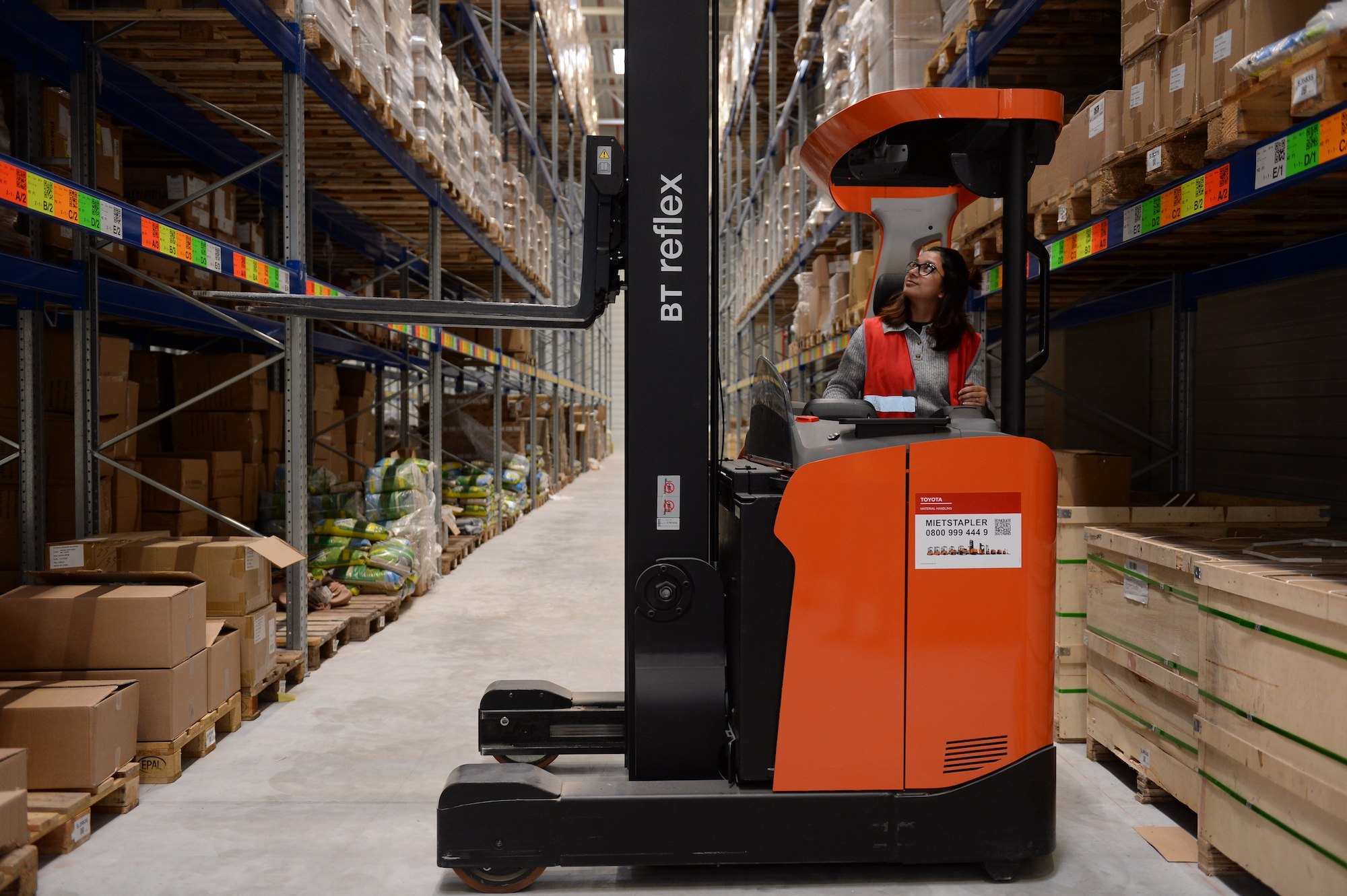
Hypergrowth scale-up uses Zendesk to keep team members happy
Logistics platform Hive, turns to Zendesk as the calming superpower to manage their ever-busy internal fulfilment operations.

“Before Zendesk my emails were overwhelmed with questions. People would find my number and there would be texts and WhatsApps too, calls and individual Slack messages – any kind of communication, with employees using all these different channels to ask the same question.”
Eva Härpfer
People Manager at Hive
“Since we have been using Zendesk for our customer support team, it seemed like the perfect fit for internal use. We were already advocates of the platform and had experience using the Zendesk support instance internally.”
Eva Härpfer
People Manager at Hive
HQ
Berlin
Founded
2020
Agents
10 across the business and 4 in the FCs
500-600
Monthly volume of tickets
12 hours
First reply time
50 hours
First resolution time
96 hours
Full resolution time
Logistics start-up Hive
Riding the wave of the e-commerce boom
Every start-up dreams of achieving hypergrowth status. An early-stage company which finds that illusive gap in the market will reap the rewards and keep investors happy. But with hyper-growth, comes a growing need to adapt processes, and hire more people in a demanding environment. This challenge was felt by Eva Härpfer, People Manager of the fulfilment centres at logistics start-up Hive before the implementation of Zendesk. The German company was founded in 2020, riding the wave of the e-commerce boom, that came as shopping habits changed with Covid emerging. In just three years, they now support their merchants' fulfilment out of five locations.
Hive – which integrates with online retailers and marketplaces to pick, pack and deliver orders, alongside handling returns – now has over 350 employees and is regularly onboarding new team members. Most of which work in the fulfilment centres where Eva oversees all people processes.

A tsunami of queries
Consistent streams of new employees saw three more people join the People team with Eva, but this still wasn’t enough to cope with demand and Eva soon realised they needed to adopt a technology solution to manage the growing number of enquiries from employees.
“Before Zendesk, my emails were overwhelmed with questions. People would find my number and there would be texts, WhatsApps, calls and Slack messages–any kind of communication, with employees using all these different channels to ask the same question.” She was so overwhelmed that at one point team satisfaction went dramatically down. “I was just losing sight of requests, it was too difficult.”
The People team needed a seamless solution to collaborate efficiently together. “When someone on the HR team was sick, there was no visibility about what was being worked on, and messages got lost,” she explained. “We needed a solution not to only reduce the number of messages, but allow us to work together to track what each of us has done on a particular ticket.”

Speedy onboarding for the win
The fulfilment industry is known for its rapidly changing environment, as well as seasonal peaks where Hive might rely heavily on student workers for 20 hours one week and none the next. “We get a lot of new people who we have to onboard as efficiently as possible, who need information from safety procedures to how they will be paid. Obviously, there will always be more questions coming up after they have worked with us for some time so it’s crucial to collaborate with different teams such as finance and payroll to provide answers quickly.”
At the fulfilment centre, Eva also works with colleagues from over 60 different nationalities, and while this has allowed her to learn about different cultures, traditions, and ways of thinking and bring this into the People team, the international mix also leads to many questions. “We get lots of questions about payroll and how to register in Germany, not to mention that German pay slips are notoriously difficult to understand–this is why we have 500-600 tickets a month,” she said.
“Understandably, when it comes to salary, there can be a lot of anger when questions aren’t answered quickly. And this is exactly why we have Zendesk.”
Zendesk was already being used by the wider Hive business to manage their customer support operations, which meant that the HR internal instance was seamlessly and quickly set up within two days last August. “Since we have been using Zendesk for our customer support team, it seemed the perfect fit for internal use. We were already advocates of the platform and had experience using the Zendesk support instance internally.”

Help Center
The process that took a little longer to get up and running was the Help Center because Eva saw this as an opportunity to update the pages. Now that all the information is readily available, she praises the search functionality–“you can search any word, but you can’t force humans to use the Help Center!”.
The People Team are utilising Zendesk Guide to encourage uptake, such as linking to articles in response to every ticket to educate employees and sticking QR codes across the fulfilment centre,” she said. “On every door, it says: ‘This is how you contact the People Team’ and it directs them to the Help Center.”

What’s next for Hive
Eva is hoping to have more time to explore the reporting function as her team expands. Having only been using Zendesk for six months, she intends to deep-dive into filtering topics to work out where she can educate employees more.
The People Team’s main KPI is first-reply time. The goal is less than 24 hours and the team has smashed that target by 50% to 12 hours. The next job is to introduce ‘smiley surveys’–like a digital version of the physical buttons seen in places like airports–at the end of emails to improve feedback.

Big wins
One of the big wins for Eva is the ability to track tickets which means the People Team can work together more efficiently. Once a month they have a ‘ticket push’ where they sit down for two hours and only answer tickets. “This wasn’t possible before Zendesk, because it was impossible to track at the same time who was working on what, what information was needed for which ticket, or forward tickets to a colleague with the appropriate knowledge to solve it quickly.”
But in addition to seamless collaboration, the tracking functionality provides transparency for Eva to managers about what capacity is actually needed.
“No one really saw how much work we had to do on the People Team – everyone knew the high growth rate of the associate team, but no one really understood the work required to onboard 30 people every month. Now we can share transparently the number of tickets we have to ensure we have enough resources to support our teams” she said. “I was just so busy before,” she said. “I’m so happy with Zendesk.”
“And we can also celebrate results together, which is only possible because of Zendesk. Now I can see with a few clicks who has done well and solved the most tickets that week–all those really basic things that bring us together as a team weren’t really possible before.”

Related stories
Retail, Wholesale & Distribution
Selective Marketplace revolutionises customer experience for its womenswear brands with Zendesk
Read customer storyRetail, Wholesale & Distribution


